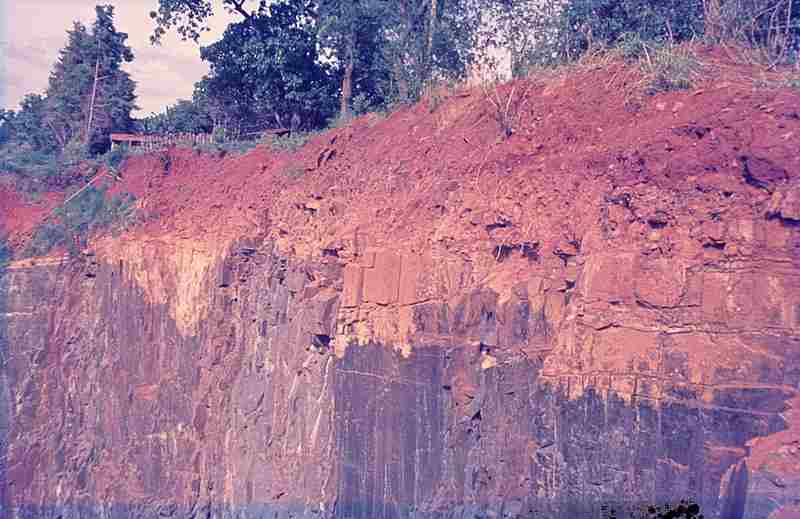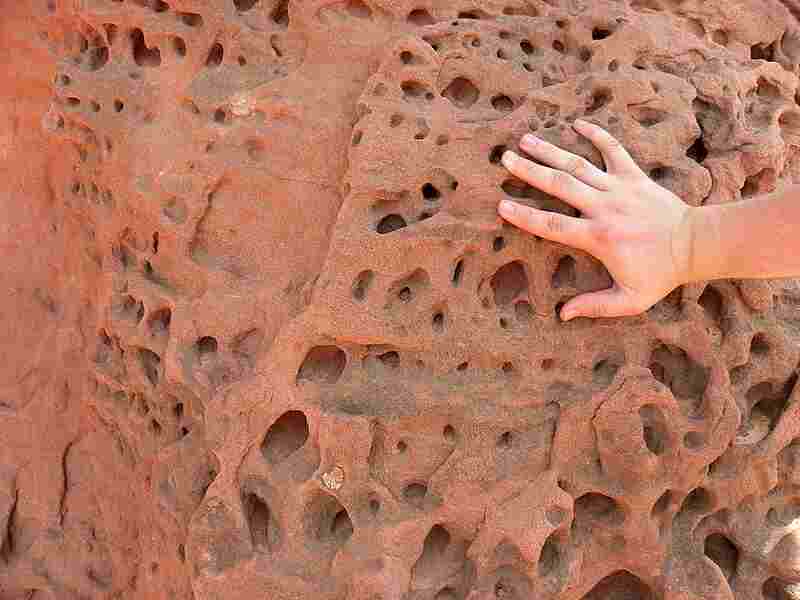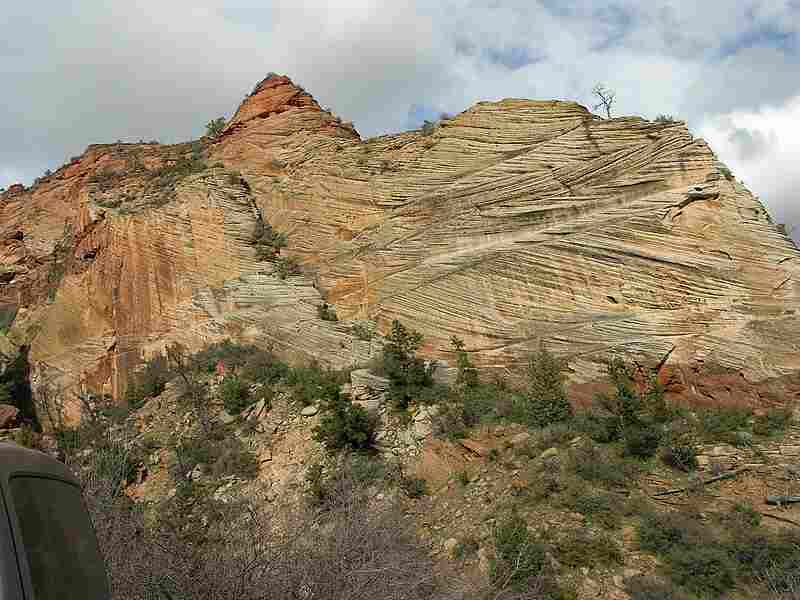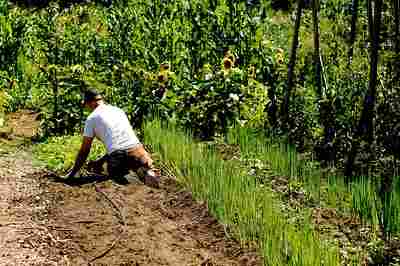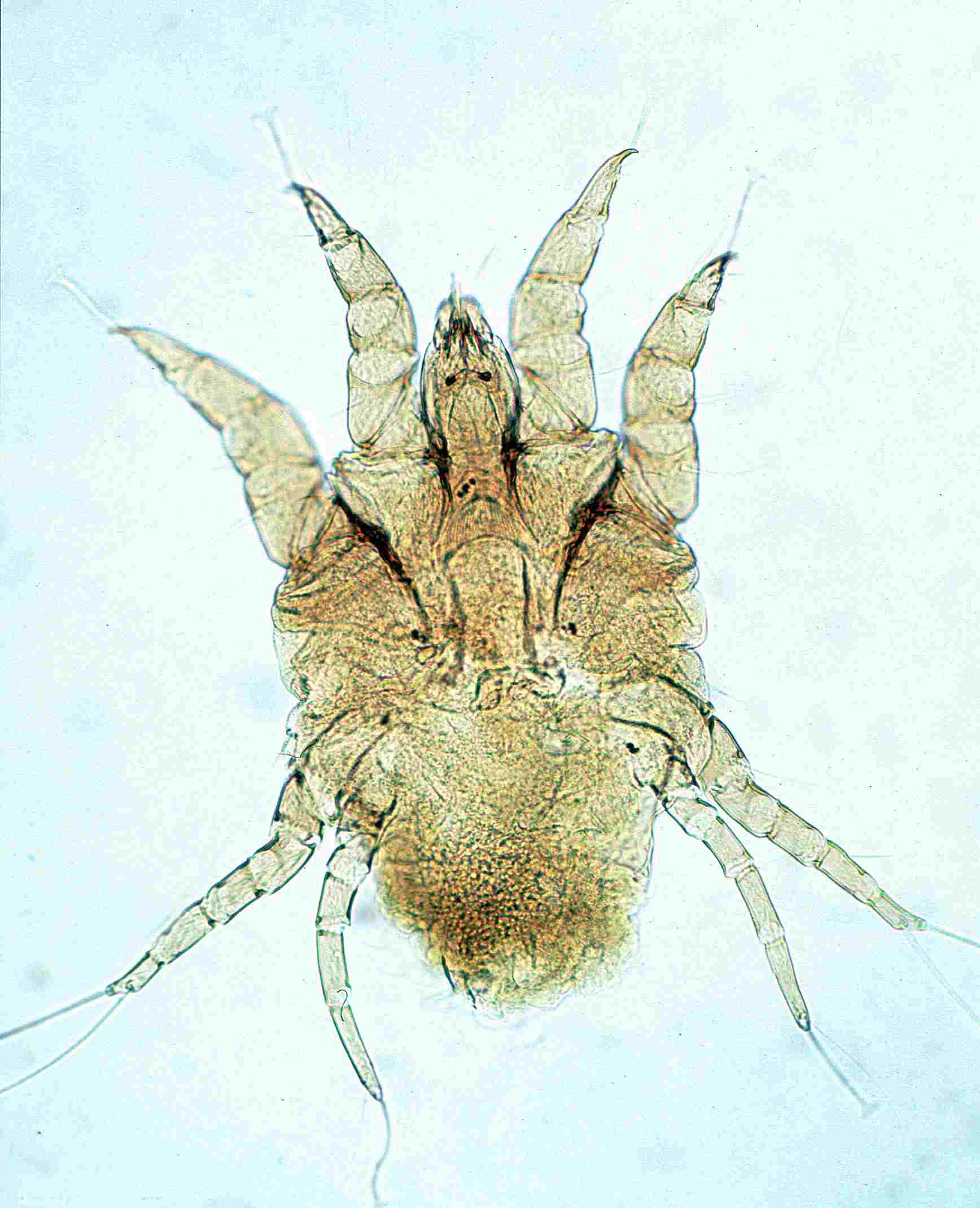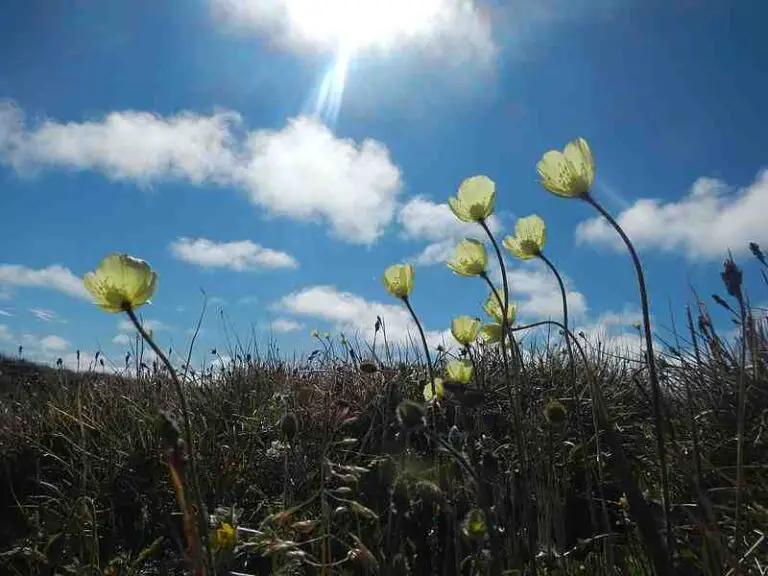9 Effects of Weathering and Their Significance Discussed
Effects of weathering are; rock disintegration, mineral alteration, soil formation, nutrient cycling, geomorphology changes, landscape evolution, hydrological changes, infrastructure damage, and environmental hazards.
This article discusses the effects of weathering and their significance, as follows;
1). Rock Disintegration (as one of the Effects of Weathering)
Weathering is the intricate geological process whereby rocks break down and disintegrate over time due to the impacts of various natural forces and chemical reactions.
Rock disintegration, an effect of weathering, involves the breakdown of rock masses into smaller fragments or particles without any significant decay or alteration of the rock-forming minerals.
This phenomenon may be driven by both mechanical and chemical processes (although mostly by physical factors) and has significant implications for the Earth's surface and the formation/evolution of soils.
Mechanical Weathering and Rock Disintegration
Physical weathering, also referred to as mechanical weathering; is a primary contributor to rock disintegration.
This process occurs when mechanical forces that are exerted on rocks, lead to their structural fragmentation without altering their chemical composition. Several mechanical weathering mechanisms and processes contribute to rock disintegration, including frost action, pressure release, abrasion, and root growth. These are briefly discussed below;
Frost action is characterized by repeated freezing and thawing of water within rock fractures, where the volumetric expansion of water as it transforms to ice, leads to the disintegration of rocks [11].
When rocks that are formed under high pressure (beneath the surface of the Earth) are exposed at the Earth's surface due to erosion, the sudden release of pressure from these rocks may lead to their expansion and consequent disintegration.
Abrasion can occur as agents of weathering like wind, water, and ice transport particles that forcefully impact rocks, leading to their gradual wearing away.
Plant roots that grow within rock fractures may also exert pressure that widens these cracks, contributing to rock disintegration.

In some cases, chemical weathering also plays a role in rock disintegration.
Chemical processes break down minerals within rocks, thereby weakening their physicochemical structure and contributing to their eventual breakdown. Water, oxygen, carbon dioxide, derived acids, and other substances can chemically react with minerals, causing them to dissolve, transform, or become more susceptible to mechanical forces.
Overview of The Result(s) of Weathering and Disintegration of Rocks
The weathering and disintegration of rocks have multiple consequences for the Earth's surface and ecosystems, which include soil formation, erosion, sedimentation, landscape evolution, nutrient cycling, and increased microbial activity.
Soil is formed when weathered rock particles combine with organic biomass, microorganisms, and other materials. This process both builds and enriches the soil with minerals and nutrients that are essential for plant growth.
Weathering and rock disintegration precede erosion, and produce sediments that can be transported by the agents of erosion like wind, ice and water [8]. These sediments are instrumental to the formation of various landforms and sedimentary rock assemblages.
The gradual disintegration of rocks plays a key role in the shaping of landscapes over geological timescales, and lead to the creation of valleys, canyons, caves, cliffs, and other landforms.
Weathered rocks release minerals into the soil, which are essential for the growth of plants and the sustainability of ecosystems.
Lastly, weathered rock masses may provide suitable surface area or microhabitats for microorganisms, which contribute to nutrient-recycling and other biogeochemical processes.
2). Mineral Alteration
Mineral alteration is a notable outcome of weathering, and can be described as a natural process whereby minerals on the Earth's surface undergo physicochemical change.
Weathering encompasses a range of physical, chemical, and biological processes that are capable of transforming the composition and structure of minerals within rocks. This process of alteration is intricately tied to the functions of various agents of weathering, such as water, acids, temperature changes, plants, animals, and reactive salts.
Effects of Mineral Alteration In Weathering
The effects and processes of mineral alteration in weathering include; chemical reactions (like hydrolysis), physical disintegration, mineral transformation, and leaching.
Chemical weathering is driven by reactions between minerals in rocks, and external agents like air, water, and derived acids.
Oxygen in the atmosphere can react with minerals like pyrite (in oxidation processes [5]), leading to changes in their chemical composition and physical attributes. For iron-bearing minerals, oxidation-induced physical changes can occur in the form of reddish coloration, as seen in lateritic rocks and soils.

Physical weathering can also facilitate mineral alteration, by contributing to the breakdown of rocks into smaller fragments, which exposes a greater surface area of minerals to environmental influences. This exposure may accelerate the chemical processes that alter the mineralogy of rocks.
Weathering processes can transform minerals into new mineral phases through a combined process consisting of dissolution and re-precipitation reactions. This mechanism is most common with carbonates and other evaporitic rocks. It is slightly similar to hydrolysis, which can transform feldspars into clay minerals like kaolinite [1].
Hydrolysis reactions occur when minerals chemically interact with water, leading to the breakdown of their compositional lattice and the release of new ions.
Water containing dissolved ions can infiltrate rocks and carry away soluble minerals, resulting in mineral alteration through the depletion of certain elements from the rock.
Link Between Mineral Alteration and Weathering
Mineral alteration is closely tied to weathering processes, and can be associated with physical, chemical, and biological weathering, as discussed briefly here;
In physical weathering, mechanical forces like freeze-thaw cycles and abrasion exert stress on mineral crystals, leading to their fragmentation and physical alteration; while increasing their susceptibility to chemical alteration as well.
Chemical reactions with water, oxygen, and acids among other reagents can dissolve or alter minerals, to produce new compounds with different characteristics.
Also, the activity of microorganisms, plants, and animals can accelerate chemical weathering by weakening physical structures and producing acids and enzymes that break down minerals.
Overview of the Effects of Weathering on Minerals
Effects of weathering on minerals are; reduced mechanical resilience, compositional changes, and physicochemical transformation.
Both weathering and the resultant alteration, lead to a reduction of the mechanical integrity and resilience of rocks. This can weaken the rocks and make them more susceptible to disintegration.
Changes in the chemical composition of minerals can result from weathering, leading to the formation of new minerals and/or the dissolution of certain chemical components.
In geological contexts, mineral alteration is the sum total of changes in the physical or chemical properties of minerals and their parent rocks, due to various processes. These processes include; metamorphism, hydrothermal activity, and, significantly, weathering. The alteration of minerals has a pivotal role to play in the evolution of the Earth's surface and the development of various geological features.
3). Soil Formation (as one of the Effects of Weathering)
Soil formation can be described as a complex process that results from the interaction between weathering, other geological processes, and biotic activities.
Weathering plays a central role in initiating the transformation of rocks and their component minerals into the diverse range of soil types that can be found across the Earth's surface.
Link Between Weathering and Soil Formation
Weathering is related to soil formation through processes and phenomena like; mechanical disintegration, chemical alteration, water flow and percolation.
The mechanical breakup of rock masses through physical processes like pressure change, freeze-thaw cycles, and abrasion, creates smaller rock fragments. These fragments form the base material of soil particles, and combine from various sources to contribute to the textural diversity of soils.
Chemical weathering is characterized by the breakdown of minerals in rocks due to reactions with substances like water and acids. Such chemical alteration results in the release of ions, which are essential components of soil nutrients [9]. New minerals may also form through chemical reactions, which contribute to soil composition.
Also, the downward percolation of water through the soil profile facilitates the translocation of weathered material from the upper layers to deeper horizons. This process is critical for the formation of distinct soil horizons, each with unique characteristics; as well as the enrichment of sedimentary mineral deposits.
Effects of Soil Formation Through Weathering
The effects of soil formation are; nutrient replenishment, textural and structural change, and horizon development.
The weathering of minerals releases essential nutrients such as calcium, potassium, and phosphorus, which become available to plants that anchor in soil. This influences plant growth and productivity of food chains.
In the process of soil formation, mechanical weathering affects existing soil texture by introducing various-sized particles from parent rocks that have been broken down.
Soil structure is also influenced by such weathering processes, thereby influencing aeration, water retention, and root penetration.
Pores and Crevices created in soil and rock fragments during weathering processes can affect its petrophysical and geotechnical properties, including its ability to support overburden weight and retain water. Soil porosity and permeability are critical for water flow/infiltration and storage.
Lastly, the downward migration of weathered material and minerals contributes to the formation of distinct soil horizons, each of which is characterized by unique properties including color, texture, and nutrient content.
Soil Types Formed by Weathering
Soil types formed by weathering are; regur soil (black soil), podzol soil, and aridsols, which may further be classified based on particle size as clayey, silty and sandy soils.
Regur soil; also called black soil, is formed as a result of the weathering of igneous rocks like basalt and granite. It is known for its high fertility that can be attributed to the presence of essential minerals in significant quantities. Regur soil is often found in regions with semi-arid climates, including the Deccan Plateau in India.

Developed mostly under forested environments (and common in the boreal ecoregion), podzol soils can be described as the result of extensive chemical weathering of minerals such as feldspar. This weathering process leads to the leaching of nutrients from upper layers to the subsoil, to create distinct mineralogical horizons.
As the name implies, aridisols form in arid and semi-arid regions, and are influenced by a combination of physical and chemical weathering processes. They are characterized by the accumulation of soluble minerals in the upper horizons.
4). Nutrient Cycling
Nutrient cycling is an important ecological process that involves the movement, transformation, consumption and reuse of essential elements within ecosystems.
Weathering, which is itself a fundamental geological process, is intricately connected to nutrient cycling, because it plays a determinant role in releasing essential nutrients from rocks to enrich soils and contribute to the growth of plants and the species-richness/diversity of ecosystems.
Link Between Weathering and Nutrient Cycling
Nutrient cycling is linked to weathering through processes and concepts like mineral breakdown, nutrient accessibility, fertile soil formation, plant nutrient uptake, and microbial influence.
Both physical and chemical weathering processes, gradually break down rocks and their component minerals over time. This breakdown effect, releases elements such as potassium, phosphorus, sulfur and calcium, from the parent material.
As rocks weather, they release these nutrients in forms that can be taken up by plants. Nutrients from weathered rocks are essential for various biological processes, including growth, reproduction, and general metabolism.
Fertile soil layers may be formed by the accumulation of weathered materials, combined with organic matter from the remains (or wastes) of plants and animals. These soils provide a supportive medium for plant roots to access the released nutrients.
Plants take up the weathering-derived nutrients from soil through their roots, and incorporate them into their tissues. When these plants shed leaves or die, the nutrients in their tissues are returned to the soil through biodegradation, completing the nutrient cycle.
Microorganisms like bacteria and fungi, play a significant role in weathering minerals and facilitating nutrient cycling. Some bacteria are even known for their ability to enhance the nutrition of trees through mineral weathering [3].
Effects of Weathering on Agriculture
Effects of weathering on agriculture are; nutrient enrichment, fertility enhancement, crop growth facilitation, and influence on agricultural landscapes.
Weathering may enrich soils with essential nutrients like nitrogen, potassium and phosphorus. Soils with optimal concentration of these nutrients, are able to support healthy plant growth and agricultural productivity.
The accumulation of weathered materials that combine with organic matter (which may come from compost) enhances soil fertility, making it suitable for cultivation. Weathering-enriched soils promote robust crop growth and higher agricultural yields.
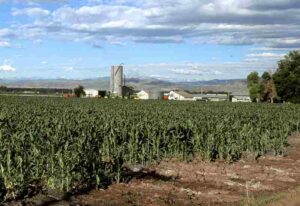
Weathering ensures that there is a steady supply of essential nutrients to crops. Optimal nutrient availability supports not only plant health and development, but also improves resistance to pests and diseases [14].
An understanding of the role of weathering in nutrient cycling can effectively guide sustainable farming practices, in regions where weathering is a prominent phenomenon. Practices such as crop rotation, cover cropping, and organic farming, help maintain nutrient-rich soils.
Areas with significant weathering often require effective soil conservation and land management to mitigate the potential occurrence and effects of erosion. Proper land management practices can minimize erosion, preserving nutrient-rich topsoil. Erosion prevention in turn ensures that valuable nutrients remain in the cultivated area.
5). Geomorphology Changes (as one of the Effects of Weathering)
Geomorphology has to do with the features, dynamics and study of the Earth's landforms, as well as the processes that shape them.
Weathering, which is a transformative geological process, has a pivotal role to play in altering the geomorphology of landscapes over extended periods of time.
The intricate relationship between weathering and geomorphology, results in a variety of changes in the rock structures and surficial landforms, thereby influencing the structure and appearance of the Earth's surface.
Relationship Between Weathering and Geomorphology Changes
The relationship between weathering and geomorphology changes can be described in terms of factors like landscape discoloration, structural alteration, extensive precipitation, surface recession, landform impacts, as well as topographic and climatic effects.
Weathering leads to the discoloration and structural alteration of rock masses. Chemical reactions between minerals and abiotic agents, such as water and oxygen, result in the breakdown and transformation of components of parent rocks. This can in turn lead to changes in color, texture, and mineral composition, all of which can alter the landscape when they occur on a large scale.
As earlier stated, chemical reactions that occur during weathering often cause minerals to disintegrate into smaller particles and new compounds. These weathering products, such as clay minerals from feldspars, and various evaporitic minerals, may be precipitated and contribute to soil formation or alter the appearance of rocks.
Weathering can cause the surfaces of rock outcrops to recede over time due to the breakdown of minerals and progressive mass loss. This process of surface recession can lead to the development of various landforms to replace preexisting ones, such as rock shelters, overhangs, and inselbergs [2].
Geomorphic processes like weathering, contribute to the formation of diverse landforms. Weathering processes like slaking and unloading can shape cuestas, granite domes, and other distinctive landform features.
The topographic outline of an area, including factors like relief, particle size, and rock composition, all influences the degree and type of weathering. Climatic factors, particularly temperature and rainfall, also play a vital role in establishing and modifying the geomorphology of an area, by determining the intensity of weathering processes.
Brief Discussion On Geomorphic Factors Affecting Weathering
Geomorphic factors affecting weathering are; topographic relief, rock composition, mass, and particle size.
As mentioned in the preceding section, temperature and rainfall are effective factors that influence the rate and type of weathering. Higher temperatures and more frequent rainfall are often associated with increased chemical weathering, especially in humid regions [10].
Topographic relief of an area affects the exposure of rocks to agents of weathering. Steep slopes may be subjected to faster rates of physical weathering due to the gravitational force of downslope currents (water, wind, ice), and the potential for rockfalls and intensive erosion.
The mineral composition of rocks also determines their susceptibility to weathering. Minerals like calcite that are more susceptible to chemical reactions will weather more quickly than those that are less reactive, like quartz.
Particle size also influences the trend of weathering, while plant roots and organisms can accelerate the process of weathering by physically breaking down rocks or promoting chemical reactions through biological mechanisms and materials like root exudates.
6). Landscape Evolution
Landscape evolution is simply the dynamic transformation of features of the Earth's surface over time, which is facilitated by processes such as weathering and erosion.
Weathering, in particular, plays an effective role in shaping the landscape by wearing away rocks, altering landforms, and impacting the overall topographic outlay of the Earth's surface.
Link Between Weathering and Landscape Evolution
The link between weathering and landscape evolution can be understood in terms of factors like; erosion-facilitation, surface alteration, landform modification, as well as climatic and tectonic influences.
Often in conjunction with erosion, weathering causes the degradation of exposed surfaces over time. Physical and chemical weathering processes may lead to the breakdown of rock materials, in some cases causing affected surfaces to become smoother, and contributing to the alteration of landforms.
Landform modification from weathering and erosion is often characterized by significant changes to the shape, size, and texture of various landforms.
Mountains may erode and lose height, riverbeds can change their channel morphology and direction of flow, and beaches can shift their geographic coverage due to the constant influence of weathering agents.
Weathering and erosion also participate effectively in the formation of new landforms. This may occur through geomorphic hazards like landslides, which, for example, can occur in response to the weakening of rocks caused by weathering [13], and can lead to the creation of new landforms on the landscape.
Lastly, factors like climate and tectonics affect the rate and type of weathering, which subsequently impacts the trend/outcome(s) of landscape evolution. As stated earlier, n areas with high rainfall and temperature fluctuations, weathering rates may be higher, leading to more rapid landscape changes.
Effects of Weathering on Landscape Evolution
Effects of weathering on landscape evolution are based on phenomena like smoothing of rock surfaces, breakdown of large rock masses, formation of soil, and establishment of topographic variability.
Physical weathering processes, including wind abrasion and freeze-thaw cycles, contribute to the smoothing of exposed rock surfaces over time.
Chemical weathering also results in the breakdown of rock minerals, with alteration of the composition and appearance of exposed surfaces; which can create distinctive landscape features over time.
Weathering leads to the formation of soil by breaking down relatively-large rock masses into smaller aggregates, allowing for the accumulation of organic matter and nutrients, and changing the outlay of the land.
Through these different phenomena and in combination with erosion, weathering contributes to the creation of varied topography, with features like hills, valleys, and plateaus.

General Overview of Factors Affecting Landscape Evolution
Factors affecting landscape evolution include substrate type/composition, biotic factors and processes, climatic conditions, and rate of geologic activity.
Substrate type and composition, influence its susceptibility to weathering and erosion, which are the key drivers of landscape evolution.
The presence and dynamics of biotic elements like vegetation and organisms, can impact the rate and type of weathering, and can also stabilize slopes and contribute to soil formation.
Climatic elements, including temperature and precipitation patterns, are significant as determinants of weathering rates and landscape evolution.
Lastly, processes like water flow, wind propagation and ice movement interact with weathered materials, and contribute to landscape change.
Ways Weathering Modifies the Landscape
Ways in which weathering modifies the landscape include; rock exposure, alteration and weakening (which increase erosion effectiveness), structural deformation, and creation of distinctive landforms. These points, which have all been raised earlier in the article, are outlined concisely below;
1. Weathering contributes to the disintegration of rocks, leading to changes in structural and textural characteristics, which can influence the landscape on which such changes occur.
2. Chemical reactions in the process of weathering may alter the mineral composition of rocks, impacting their appearance and color, and altering the aesthetic attributes of the landscape.
3. Rock materials that are broken down by weathering ultimately become part of the soil, enriching the ground with minerals and nutrients, and replacing the outline of parent rock materials with a less-prominent profile of sediments.
4. Weakened rock due to weathering can contribute to the formation of new landforms through processes like extensive dissolution (such as in karst regions [4]) and landslides.
7). Hydrological Changes (as one of the Effects of Weathering)
Hydrological changes refer to alterations in the flow-trend, distribution, and properties of water within different Earth systems.
Weathering is a critical geological process that influences hydrological changes by altering the permeability of rocks, influencing groundwater flow, and contributing to the formation of aquifers and springs among others.
Link Between Weathering and Hydrological Changes
The link between weathering and hydrological change is defined by permeability modification, formation of aquifers, influence on aquatic ecosystems, changes in water residency time, and groundwater flow-alteration.
Petrophysical properties of rocks like their permeability can be modified through weathering processes. As rocks break down, they may become more fractured and porous, and this may also affect their permeability. Highly weathered rocks can develop secondary pathways for water flow, impacting groundwater dynamics and surface runoff.
Aquifer formation is an outcome of weathering in some cases. Weathering can create crevices and voids within rocks, which support to the development of aquifers - geological formations that are capable of storing and transmitting groundwater [7]. Intensively fractured, weathered rocks can act as water reservoirs, thereby affecting regional hydrology.
Subaqueous springs, which originate underwater, are sometimes the result of preferred paths of groundwater flow through highly permeable, weathered sedimentary assemblages. Changing meteorological conditions, such as increased rates of precipitation, can influence the discharge of subaqueous springs.
The rate of weathering in any given region can influence the hydraulic conductivity of rocks. Rocks susceptible (and/or subjected) to higher weathering rates may have shorter water residency times, thereby affecting how water is transmitted through the hydrological system.
Lastly, weathering can create preferential pathways for groundwater flow within rock formations. These pathways, often associated with altered and fractured zones, can significantly influence the dynamics of subsurface water.
Overview of The Effects of Weathering on Hydrological Conditions
Effects of weathering on hydrological conditions include flow alteration through porosity change, modification of groundwater recharge dynamics, spring formation and channel/basin morphology changes.
Increase in porosity can accompany weathering, with the creation of crevices and pore spaces within rocks. This porosity increase can influence the storage and flow of water.
Mechanical weathering can facilitate the formation of joints and fractures in rocks, thereby establishing pathways for water movement.
Rocks subjected to intense weathering can enhance regional groundwater recharge, by facilitating the downward movement of water through permeable pathways.
In areas with significant weathering and fractured rocks, the emergence of springs is often linked to the availability of water pathways (formed through weathering).
Hydrological Factors Influencing Weathering
Hydrological factors influencing weathering include meteorological conditions like precipitation and humidity, surface water flow conditions, and groundwater dynamics.
Variations in meteorological parameters like precipitation, and humidity, impact the rate and type of weathering [6]. As stated earlier, increased rates of precipitation can enhance weathering by promoting the occurrence of chemical reactions.
The movement of water, whether as surficial runoff or subsurface flow, can accelerate physical/mechanical weathering by dislodging rock particles and contributing to abrasion.
Groundwater movement through subsurface rocks, can distribute dissolved substances that participate in chemical weathering and alteration of rock compositions.
8). Infrastructure Damage
Infrastructure damage refers to the weakening, deterioration, and/or destruction of man-made structures and facilities due to the impacts of various factors, including weathering.
Weathering, both natural and anthropogenic, often has a significant role to play in causing damage to buildings, bridges, roads, and other kinds of infrastructure. In such cases, it may be described as the result of the cumulative impact of physical, chemical, and biological processes on these structures over time.
Link Between Weathering and Infrastructure Damage
Weathering is related to infrastructure damage through mechanisms like mechanical erosion, chemical reactions, biological activity, and thermal stress.
Mechanical wear results from physical weathering processes such as freeze-thaw cycles, abrasion by wind-blown particles, and water bombardment, all of which can weaken the structural integrity of buildings and infrastructure. Cracks, fractures, and surface degradation can occur as a result of these processes.

Chemical reactions in the process of weathering, which are driven by moisture, temperature changes, and (in some cases) the presence of pollutants, can facilitate the breakdown of construction materials. For instance, exposure to acid rain can corrode metal components of infrastructure, weakening them over time, and ultimately causing their destruction [15].
Biological activities and processes like the growth of vascular and non-vascular plants, algae, fungi, and other microorganisms on infrastructure surfaces can contribute to weathering, as can be observed with offshore wind turbines, water dams, and other engineering structures.
The roots of plants can penetrate cracks in building walls, as well as in bridges, and pavements, accelerating the process of fragmentation and deterioration.
Thermal stress from repetitive and significant temperature changes, can affect manmade structures in similar manner to rocks.
Temperature fluctuations lead to expansion and contraction of construction materials. Over time, these repeated alteration in volume can cause the formation of cracks and fractures, making the infrastructure more susceptible to other forms of weathering.
Effects of Weathering on Infrastructure
The effects of weathering on infrastructure include; structural disintegration, surface deterioration, increase in safety concerns and maintenance costs, among others.
Because weathering weakens materials like concrete, steel, and wood that make up manmade structures, it can lead to structural damage, including the formation of cracks, spalling, as well as loss of tensile strength and load-bearing capacity.
Also, weathering can lead to aesthetic changes that result in the loss of aesthetic appeal of buildings and other infrastructure. These changes could be in the form of chipping, discoloration, and surface roughening among others.
Weathering-impacted infrastructure poses safety risks to people and vehicles. These include cracked pavements, crumbling facades, weakened bridges, and fractured dams, all of which can lead to major hazards and losses.
Lastly, regular repairs and maintenance are required to address the effects of weathering in infrastructure, resulting in increased costs for upkeep.
Weathering's Impact on Civil Engineering
The impact of weathering on civil engineering includes material selection challenges, geography-dependent design considerations, maintenance planning, and climate change adaptation/resilience concerns.
Civil engineers need to consider susceptibility to weathering, when selecting construction materials [12]. Materials that are resistant to weathering are preferable to ensure longer-lasting and more durable structures, especially in intensive-weathering-prone areas.
Engineers must also design structures that can withstand weathering processes. This often includes incorporating features like drainage systems for preventing water accumulation, and protective coatings to mitigate chemically-reactive degradation.
Understanding the patterns and potential damage of weathering, helps civil engineers to develop effective structure-maintenance plans. Regular inspections and preventive measures, with these considerations in place, can significantly extend the lifespan of infrastructure.
Climate change results in changing weather patterns, which can impact infrastructure resilience. Civil engineers are therefore tasked with designing structures that can withstand more extreme weather events.
9). Environmental Hazards (as one of the Effects of Weathering)
One of the most influential effects of weathering, is its collective, hazardous environmental impacts.
Environmental hazards resulting from weathering are generally characterized by the release of particles and pollutants; as well as changes to landforms that can have various negative impacts on the environment, natural ecosystems, wildlife, and human health.
Weathering processes contribute to the degradation of natural and built environments, and leads to a notable range of hazards.
Link Between Weathering and Environmental Hazards
Weathering is linked to environmental hazards in the form of air pollution, sudden landform/manmade structure collapse, water contamination, and coastal erosion.
Air pollution can result from weathering, some forms of which release particulate matter and pollutants into the atmosphere. For example, wind-induced weathering of certain materials can release particulates that contribute to air pollution, negatively affecting air quality and potentially leading to respiratory issues.
Landform alteration caused by weathering can involve significant modification of the shape, size, and composition of geomorphic structures. These changes can in turn lead to hazards like rockfalls and the collapse of manmade structures built on or near unstable landforms.
Chemical weathering can cause the release of dissolved minerals and potential-contaminants into water bodies, thereby affecting water quality. This can result in the contamination of drinking water sources and inhabited aquatic ecosystems.
Coastal erosion facilitated by weathering can be very hazardous, such as in cases involving the extensive breakdown of coastal rocks and cliffs. This process can lead to severe/impactful coastal erosion, which threatens infrastructure and natural habitats located along the affected coastlines.
As stated earlier, airborne pollutants released in the process of weathering can contribute to respiratory and cardiovascular health problems in humans. The release of hazardous particulate and various mineral substances into water bodies, can also impact aquatic life and, in turn, affect the economies of human populations dependent on those ecosystems.
Effects of Weathering on the Environment
Effects of weathering on the environment include; loss of habitat, contamination of water resources, air quality alteration, geomorphological modification, and hazards from infrastructural damage. These are summarily outlined below;
Changes in landforms as a result of weathering, can lead to the loss of associated habitats for various species, thereby affecting biodiversity and ecosystem health.
Weathering processes (in natural and manmade environments) can release pollutants like heavy metals and various minerals into water bodies, leading to water contamination and negatively affecting aquatic ecosystems.
Because weathering contributes to the breakdown of rocks, it is a precursor and facilitator of soil erosion. Erosion can reduce soil fertility, affect agricultural productivity, and contribute to sedimentation in water bodies.
Particulate materials released through weathering processes can be transported by air currents and contribute to air pollution, with negative effects on air quality and human health.
Lastly, weathering-related hazards like landslides and extensive coastal erosion can damage infrastructure, disrupt transportation systems, and pose major safety risks to communities.
Conclusion
Effects of weathering are;
1. Rock Disintegration
2. Mineral Alteration
3. Soil Formation
4. Nutrient Cycling
5. Geomorphology Changes
6. Landscape Evolution
7. Hydrological Changes
8. Infrastructure Damage
9. Environmental Hazards
References
1). An, W.-b.; Wang, L.; Chen, H. (2020). "Mechanical Properties of Weathered Feldspar Sandstone after Experiencing Dry-Wet Cycles." Hindawi, Advances in Materials Science and Engineering 2020:1-15. Available at: https://doi.org/10.1155/2020/6268945. (Accessed 31 August 2023).
2). Buckman, S.; Morris, R. H.; Bourman, R. (2021). "Fire-induced rock spalling as a mechanism of weathering responsible for flared slope and inselberg development." Springer Nature, Nature Communications 12(1):2150. Available at: https://doi.org/10.1038/s41467-021-22451-2. (Accessed 31 August 2023).
3). Christophe, C.; Turpault, M.-P.; Frey-Klett, P. (2006). "Root-Associated Bacteria Contribute to Mineral Weathering and to Mineral Nutrition in Trees: a Budgeting Analysis." Applied and Environmental Microbiology 72(2):1258-66. Available at: https://doi.org/10.1128/AEM.72.2.1258-1266.2006. (Accessed 31 August 2023).
4). De Waele, J. (2017). "Karst Processes and Landforms." The International Encyclopedia of Geography (pp.13 pages). Available at: https://doi.org/10.1002/9781118786352.wbieg0968. (Accessed 31 August 2023).
5). dos Santos, E. C.; Silva, J. C. M.; Duarte, H. A. (2016). "Pyrite Oxidation Mechanism by Oxygen in Aqueous Medium." The Journal of Physical Chemistry C 120(5). Available at: https://doi.org/10.1021/acs.jpcc.5b10949. (Accessed 31 August 2023).
6). Eppes, M. C.; Magi, B. I.; Scheff, J.; Warren, K.; Ching, S.; Feng, T. (2020). "Warmer, Wetter Climates Accelerate Mechanical Weathering in Field Data, Independent of Stress‐Loading." Wiley, Geophysical Research Letters 47(24). Available at: https://doi.org/10.1029/2020GL089062. (Accessed 31 August 2023).
7). González, J. A. M.; Comte, J.-C.; Legchenko, A.; Offerdinger, U. S.; Healy, D. (2020). "Quantification of groundwater storage heterogeneity in weathered/fractured basement rock aquifers using electrical resistivity tomography: Sensitivity and uncertainty associated with petrophysical modelling." Journal of Hydrology 593:125637. Available at: https://doi.org/10.1016/j.jhydrol.2020.125637. (Accessed 1 September 2023).
8). Hack, H. R. (2020). "Weathering, Erosion, and Susceptibility to Weathering." Soft Rock Mechanics and Engineering (pp.291-333). Available at: https://doi.org/10.1007/978-3-030-29477-9_11. (Accessed 31 August 2023).
9). Harley, A. D.; Gilkes, R. J. (2000). "Factors influencing the release of plant nutrient elements from silicate rock powders: A geochemical overview." Nutrient Cycling in Agroecosystems 56(1):11-36. Available at: https://doi.org/10.1023/A:1009859309453. (Accessed 31 August 2023).
10). Mao, H.-R.; Zhao, Z.; Cui, L.-F.; Liu, C. (2018). "The influence of climate and topography on chemical weathering of granitic regoliths in the monsoon region of China." Acta Geochimica 37(5). Available at: https://doi.org/10.1007/s11631-018-0293-4. (Accessed 31 August 2023).
11). Matsuoka, N.; Murton, J. (2008). "Frost Weathering: Recent Advances and Future Directions." Permafrost and Periglacial Processes 19(2):195 - 210. Available at: https://doi.org/10.1002/ppp.620. (Accessed 31 August 2023).
12). Pires, V.; Rosa, L. G.; Amaral, P. M.; Simão, J. (2023). "The Susceptibility to Salt Fog Degradation of Stone Cladding Materials: A Laboratory Case Study on Two Limestones from Portugal." Heritage 6(1):492-504. Available at: https://doi.org/10.3390/heritage6010026. (Accessed 31 August 2023).
13). Regmi, A. D.; Yoshida, K.; Dhital, M. R.; Devkota, K. (2012). "Effect of rock weathering, clay mineralogy, and geological structures in the formation of large landslide, a case study from Dumre Besi landslide, Lesser Himalaya Nepal." Landslides 9(2). Available at: https://doi.org/10.1007/s10346-011-0311-7. (Accessed 31 August 2023).
14). Tripathi, R.; Tewari, R.; Singh, K. P.; Keswani, C.; Minkina, T.; Singh, A. K.; Corato, U. D.; Sansinenea, E. (2022). "Plant mineral nutrition and disease resistance: A significant linkage for sustainable crop protection." Frontiers in Plant Science 13:883970. Available at: https://doi.org/10.3389/fpls.2022.883970. (Accessed 31 August 2023).
15). Zhang, Y.; Li, Q.; Zhang, F.; Xie, G. (2017). "Estimates of Economic Loss of Materials Caused by Acid Deposition in China." Sustainability 9(4):488. Available at: https://doi.org/10.3390/su9040488. (Accessed 31 August 2023).
